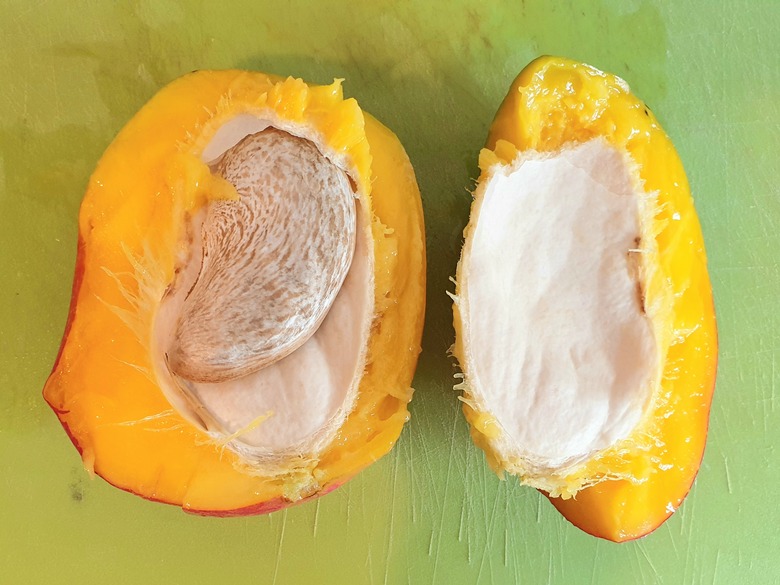How To Plant A Mango Pit
Mango (Mangifera indica) is a tropical fruit tree native to southern Asia prized worldwide for its sweet, juicy fruit. The pit inside a mango fruit contains a seed that can be planted to grow a mango tree, though not all mango tree seeds will produce plants that are true to type.
Mango trees are large, fast-growing trees that are capable of surviving winters in USDA hardiness zones 11 and 12, which limits where they can be grown outdoors in the U.S. Outside of tropical climates, they are sometimes grown in large pots that can be moved indoors in the winter months.
Growing Mango From a Seed
Mango trees can be grown from seed. There are two types of mango seeds: monoembryonic (meaning they have one embryo) and polyembryonic (meaning they have multiple embryos). You can tell the difference between the two types of seed by looking at the number of segments: a monoembryonic seed has just one segment, while a polyembryonic seed has more than one.
While polyembryonic mango seeds will produce trees that are the same type as the parent tree, new mango trees that are grown from monoembryonic seeds will not grow true to type. Mango trees that produce monoembryonic seeds must therefore be propagated vegetatively by a process known as grafting.
Indian types of mango, which are colorful fruits commonly available for purchase at the grocery store, usually have monoembryonic seeds. Indochinese mango varieties, which are less colorful, have polyembryonic seeds. Any mango seed can be used to grow rootstock for grafting.
Tip
Mango trees that produce monoembryonic seeds will not grow true to type if grown from seed.
Mango Pit or Seed?
Every mango fruit contains a pit at the center that is surrounded by the flesh of the fruit. Enclosed in this mango pit is a kidney-shaped seed that must be extracted from the outer husk before planting.
One way to do this is by making a small slit in the thin side of the tough seed husk, then prying it open with tools to remove the embryo inside.
Tip
The outer husk of a mango should be removed before planting.
How to Plant Mango Seed
It is very important to plant mango seeds soon after removing them from the fruit, as the seeds lose viability quickly. After removing a seed from the fruit, allow the mango seed to dry in a shady spot for a day.
Plant the seed with the concave side, which is the side that curves inward, facing down into the potting soil, at a depth of about 1 inch. The top of the seed should be uncovered. Mango seed germination usually takes two or three weeks. If you see a seed turning black, that means it is rotting and should be replaced.
If you are looking to grow multiple mango seeds at a time, you can start them all in a seedling bed and then transplant individual seedlings into larger pots with drainage holes.
**Mango trees grown from seed usually begin to bear fruit after five years.** Grafted trees produce fruit sooner. These tropical plants perform best when planted in full sun.
References
- Government of Western Australia: Propagating Mangoes
- Cal Poly UFEI: Mango
- University of Florida IFAS Extension: Mango Growing in the Florida Home Landscape
- Texas A&M Agrilife Extension: Fruit & Nut Resources – Mango
- University of Florida IFAS Extension: Mangifera indica – Mango
- University of Florida IFAS Extension: Mango
- UC Davis Western Institute for Food Safety and Security: Mangos
